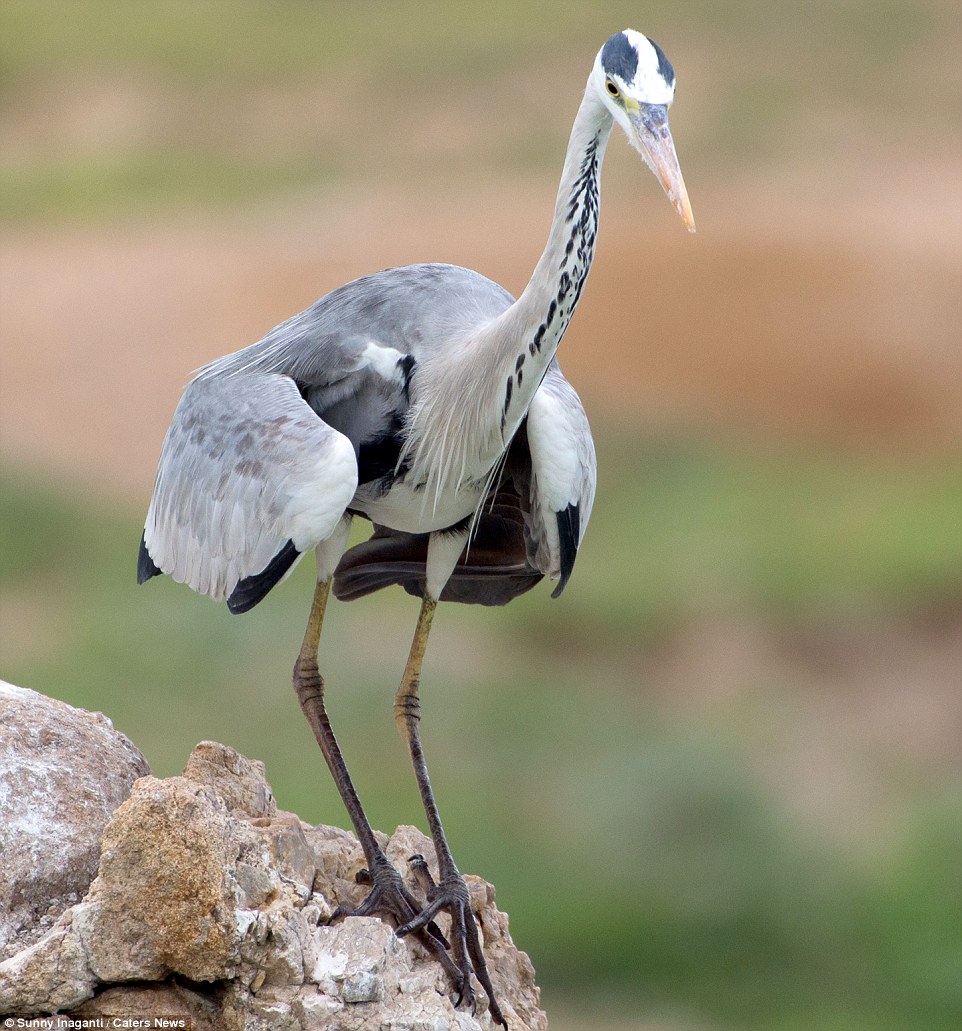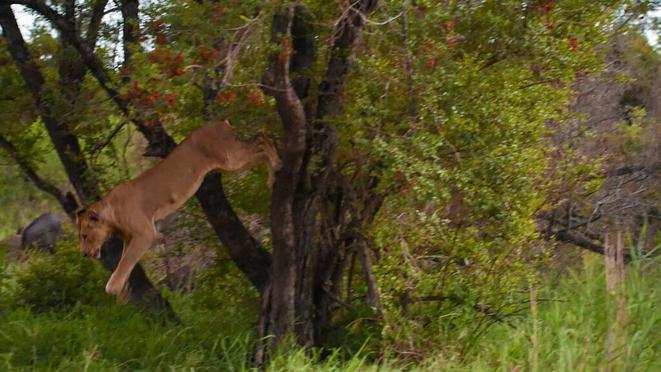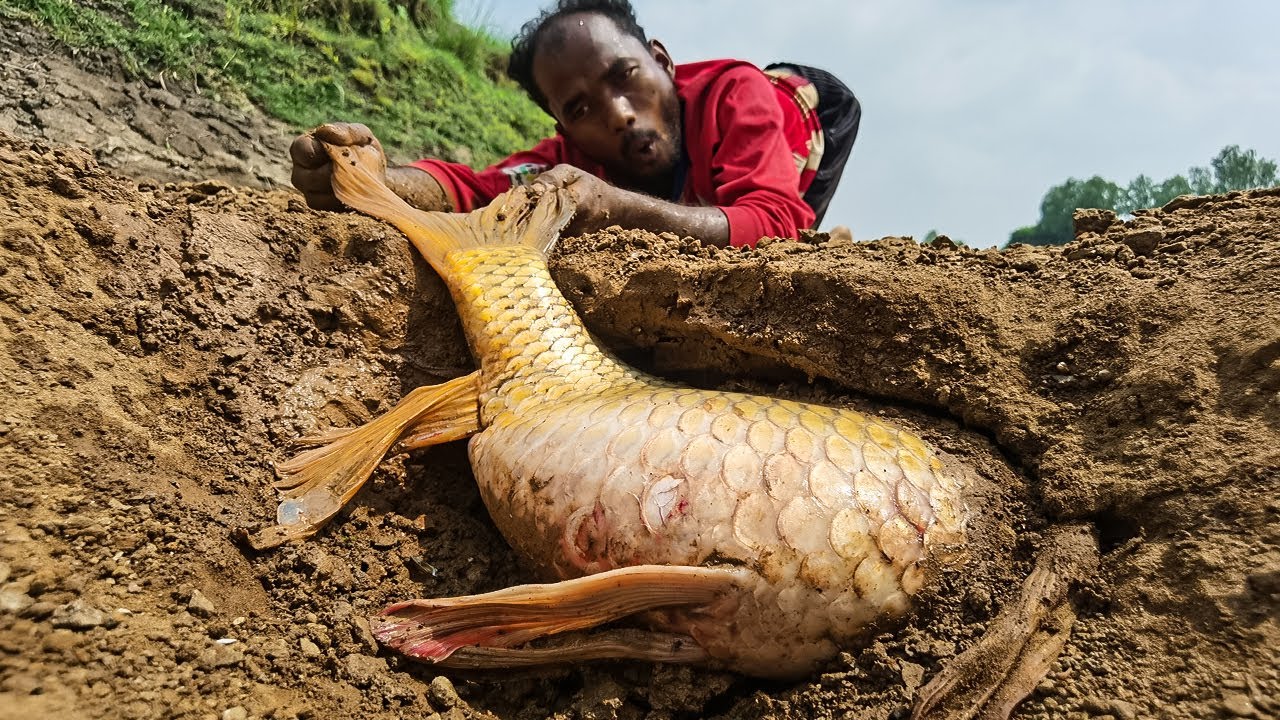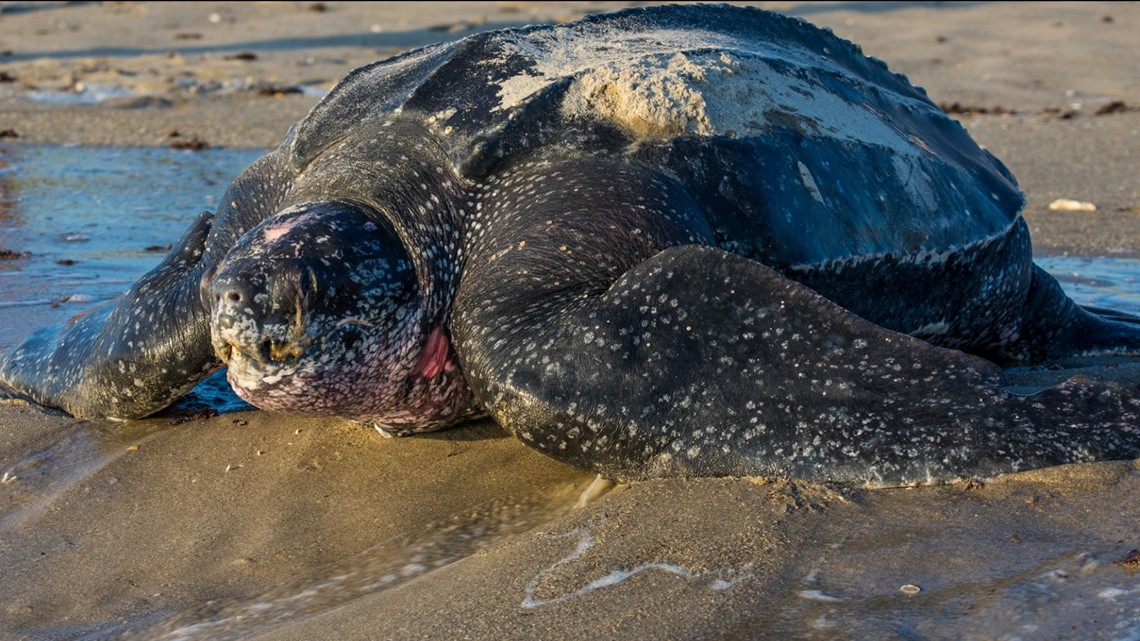There are about 250 species of owls in the world, belonging to the order Strigiformes and categorised into two families. These two families comprises the Tytonidae (Barn and Bay owls) and the Strigidae (True Owls).
Barn owls are of average size, have heart-shaped faces and long legs with powerful talons. As for True owls (which most owls belong to), they possess large heads and round faces, short tails, and muted feathers with mottled patterns.
Owls have a wide range of habitats, such as deserts, forests, prairies and even the Arctic tundra. They build their nests in trees, barns, caves and even in holes in the ground. Unlike other birds that migrate to warmer regions during winter, most owls do not and inhabit the same place all year round.
These birds of prey can be found sleeping in tree holes, cliff ledges, empty houses, fissures, and commonly on the limbs of trees, with their heads turned backwards. Nonetheless, owls tend to avoid constructing their nests or sleeping in areas frequented by a lot of people, or predators and other animals.
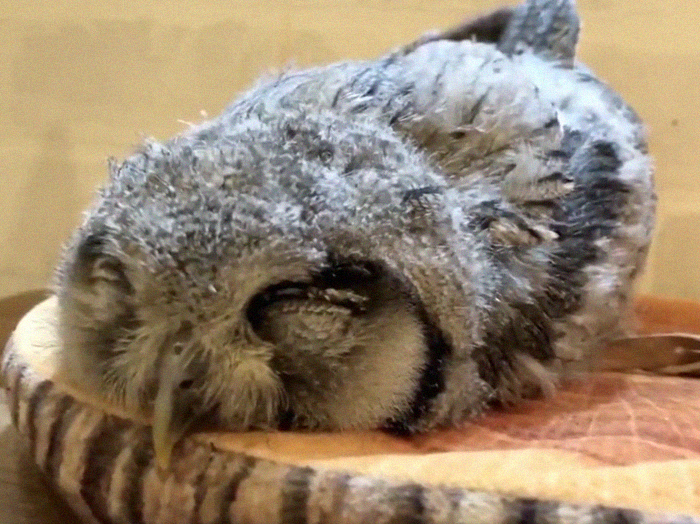
Credit: @toricaferoppong (Twitter)
Now, here is the interesting part about owls’ unique method of sleeping. Why is it that young owls sleep on their stomach with their face down, similar to a human being who is exhausted? A newborn owl may lean against the nest’s sides or against a sibling while sleeping. But juvenile owls will usually lay face down, as their neck muscles are not strong enough to support the weight of their considerably heavy heads.

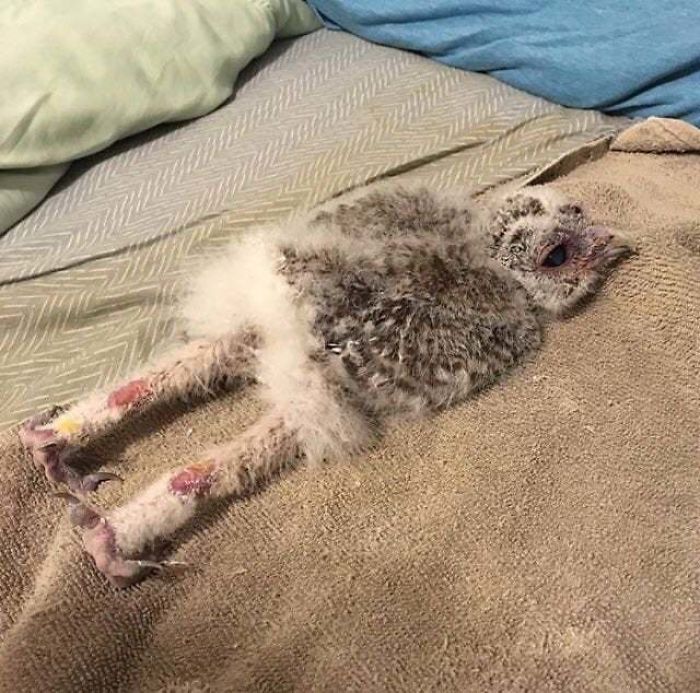
Owls are known as birds of prey, or raptors, similar to hawks and eagles, which means that they employ their sharp talons and curved bills to pursue and kill their prey. However, they do have a number of differences from hawks and eagles. Most owls have huge heads, sturdy bodies, short tails, soft feathers, eyes that face forward, and a reversible toe that can point either forward or backward.
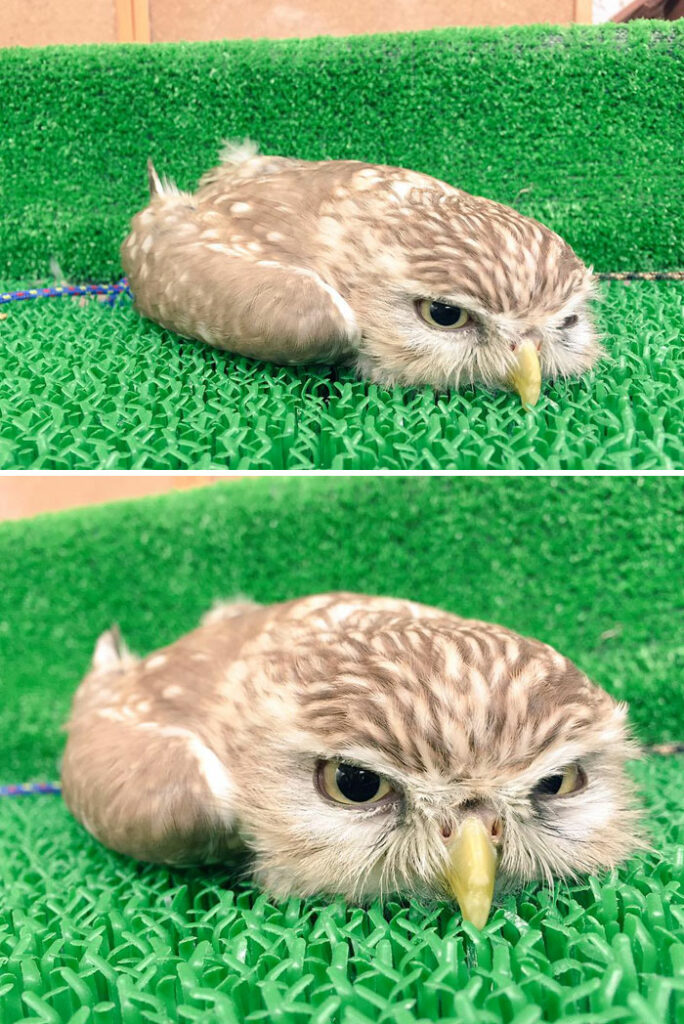
Credit: @fs_harajuku (Twitter)
As the owlets grow older and gain physical strength and endurance, they will sleep with their talons tightly gripped to a branch with their face forward. Occasionally, they can sleep on their belly or with their heads backward, like other birds do.
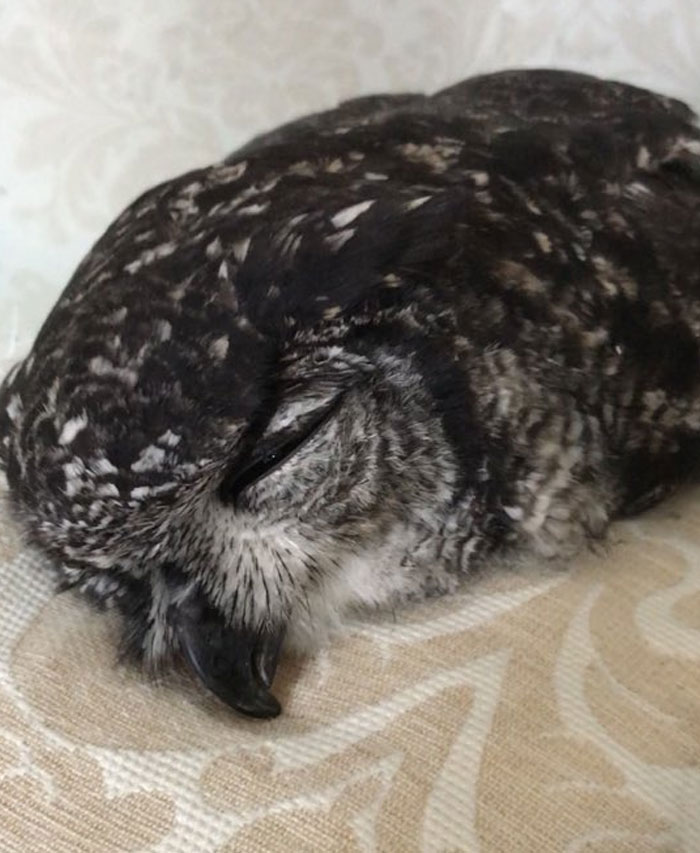
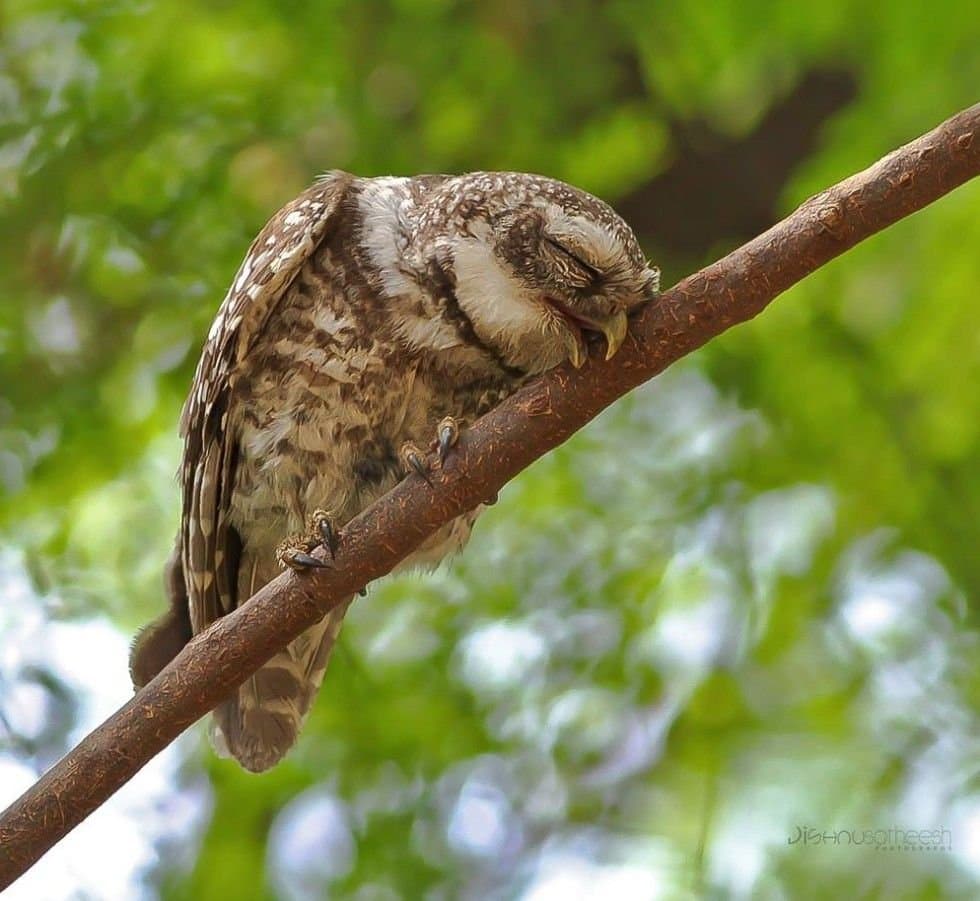
According to an article published by the National Audubon Society, a non-profit environmental organization dedicated to conservation, a juvenile owl does not fall out of a tree while sleeping as its rear toe, the hallux, clutches a branch and will not open or let go until the bird bends its leg.
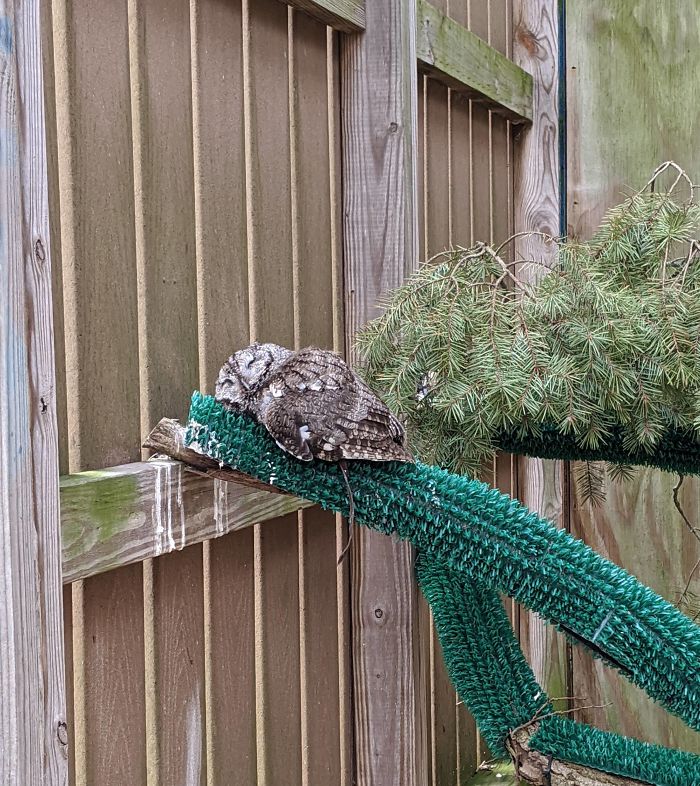
Credit: whaddupmaknittah (Reddit)
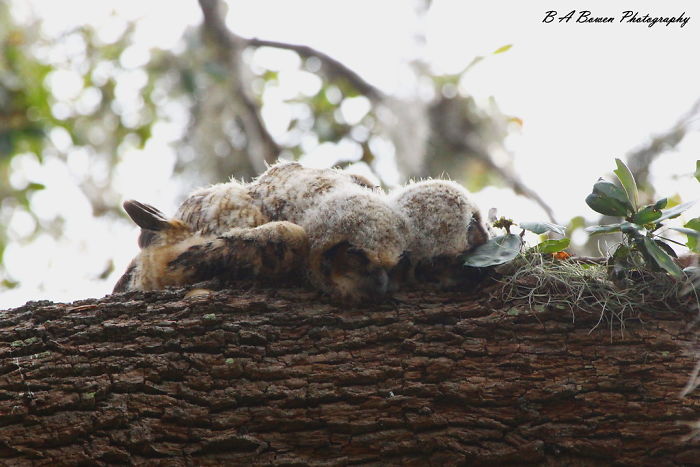
Credit: B A Bowen Photography | Flickr
However, even before they know how to fly, most owlets have a strong desire to explore their surroundings and sadly end up falling to the ground. Owlets’ naps only last for a short time, and while they are asleep, they do not like to be awakened, even to be fed.
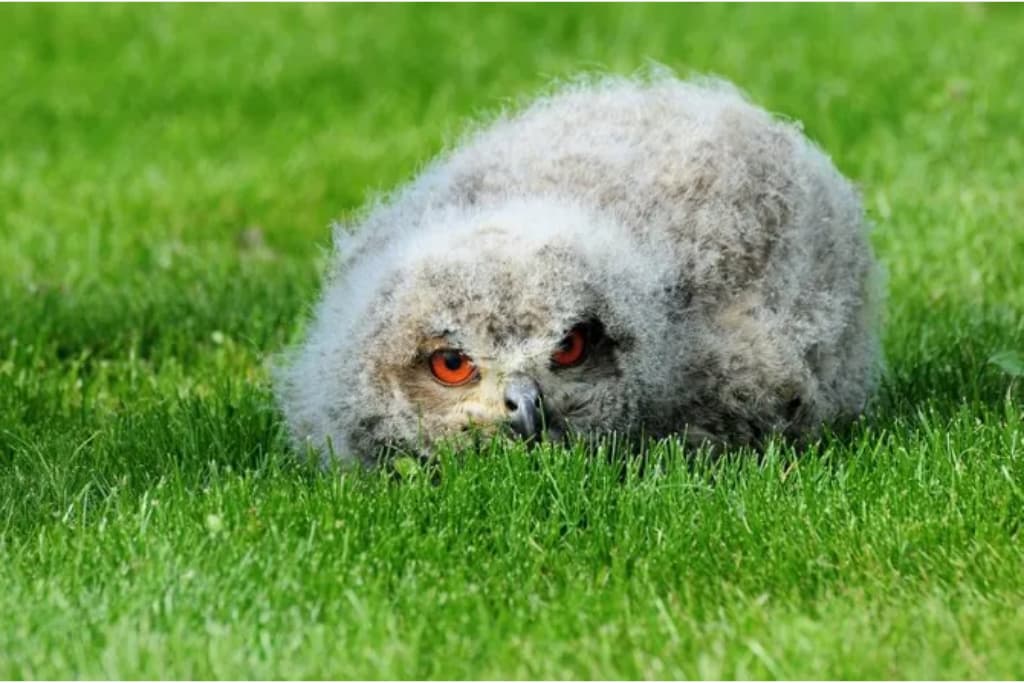
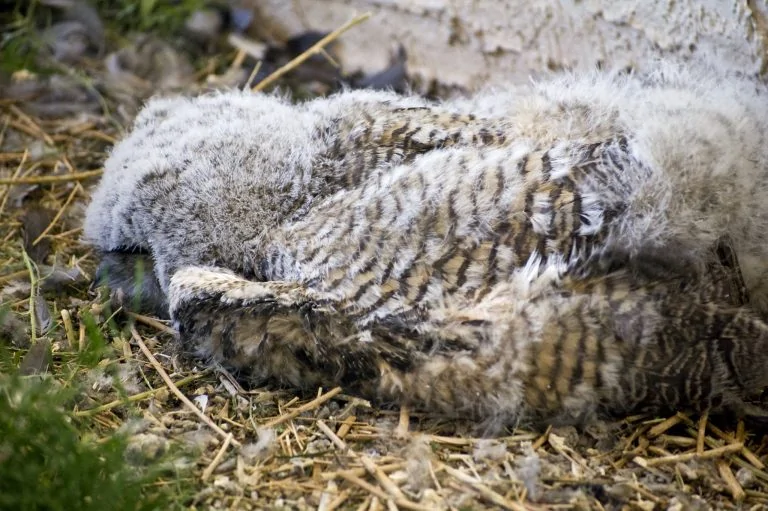
Credit: Ken Bosma | Flickr
Like many other birds, owls are lightweight, but their heads are heavy in comparison to their torso. In fact, the head makes up to about 1/3 to ½ in proportion to the torso’s weight. As well, an owl’s skeleton is very light and strong, designed for both walking and flying.
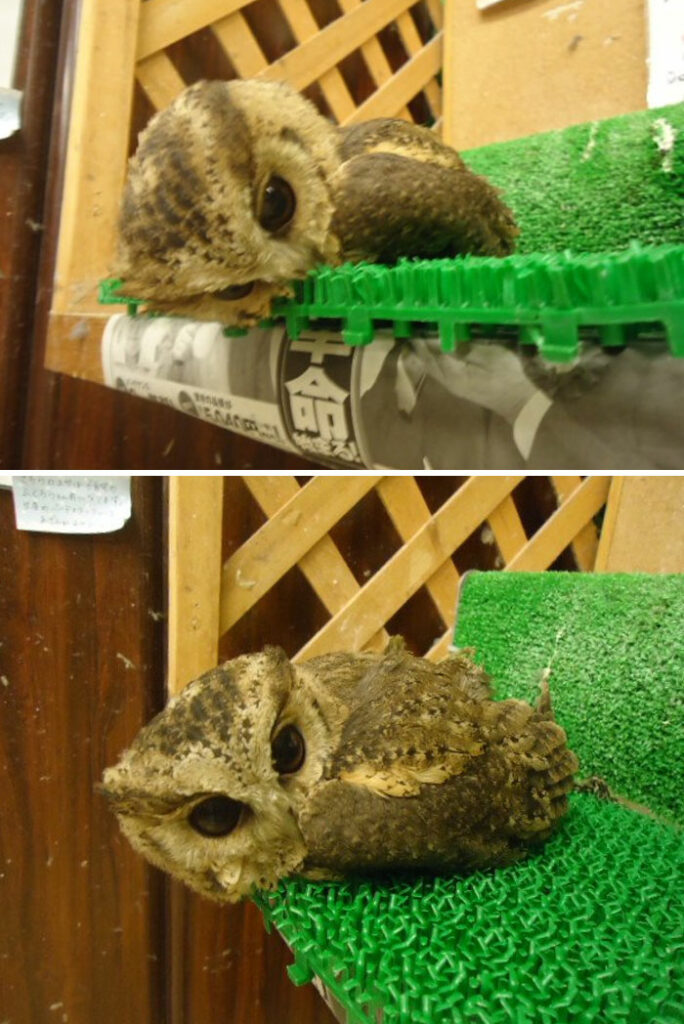
Credit: @fs_harajukuinfo (Twitter)
The skeleton accounts for about 7-9% of its total body weight, with some of the larger bones being hollow, thus helping to reduce the overall weight. In birds, many of the bones are fused together, as opposed to those in mammals which would be separated, therefore rendering them strong to support their weight on the ground.
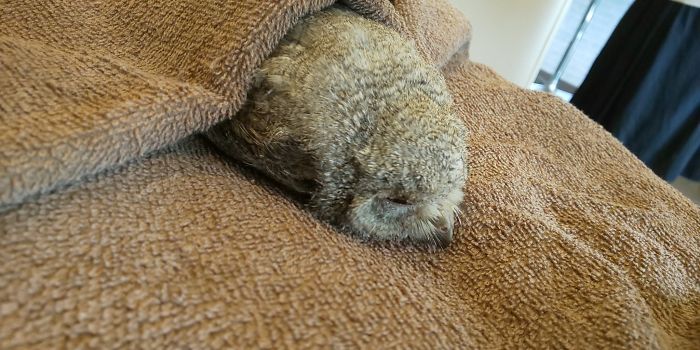
Credit: RukiOwl

Credit: Lihui5344Rie (Twitter)
An owl is considered as a baby from the day they are born and up until about 84 days. Upon hatching, they weigh around 34.7 g and after a month, they can weigh between 800 and 1000 g.
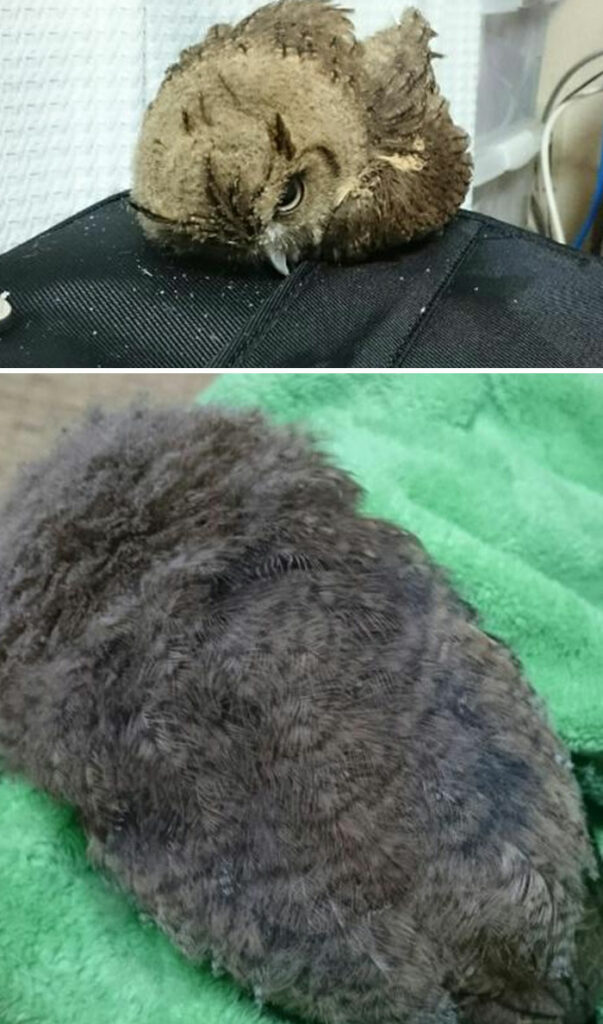
Credit: @nakaji0719
A fascinating thing to know about owls – as stated by experts at the Max Planck Institute for Ornithology – is that they have REM sleep, which is the type of sleep human beings undergo when they dream. Now, we wonder what kind of dreams could owls possibly have? However, as they mature, owls spend less time in REM sleep.

Credit: Tanja Brandt
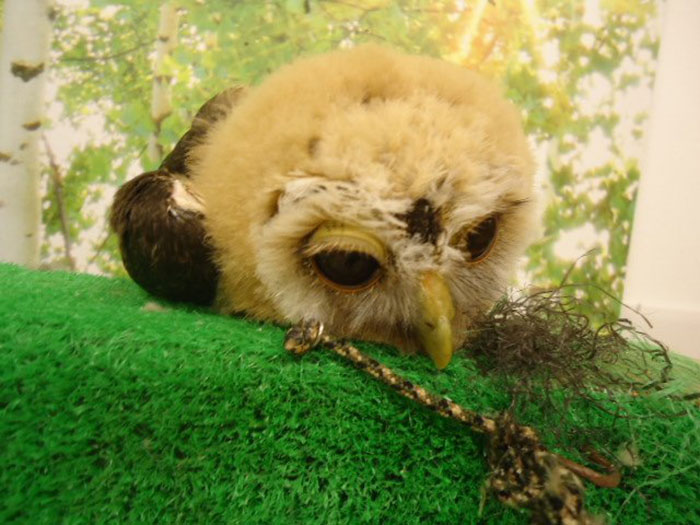
Credit: @fs_harajukuinfo
Various creatures on Earth have different sleep cycles, positions and conditions. For example, a cat can spend about half of their lives resting. On the other hand, a lion may require up to 20 hours of sleep a day. Lions are carnivorous and after a heavy meal, they seek the most favorable conditions to digest the meat, like sleeping in the shade, under trees or in thick grass. If there is too much disturbance around, they will climb up a tree to sleep there.
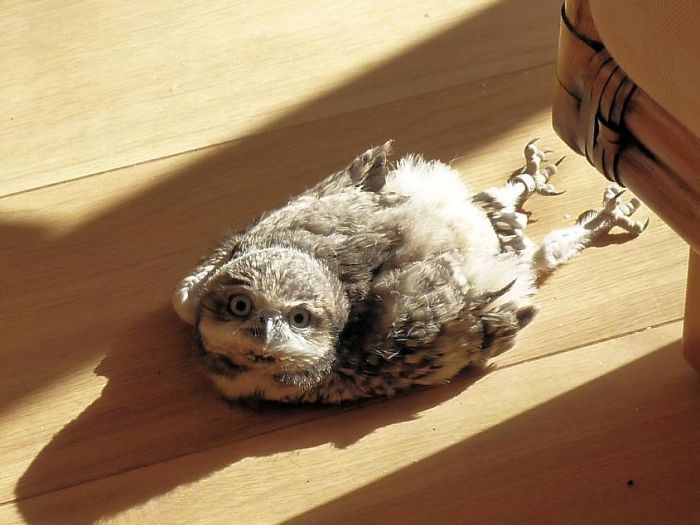
Credit: doorabl (Reddit)
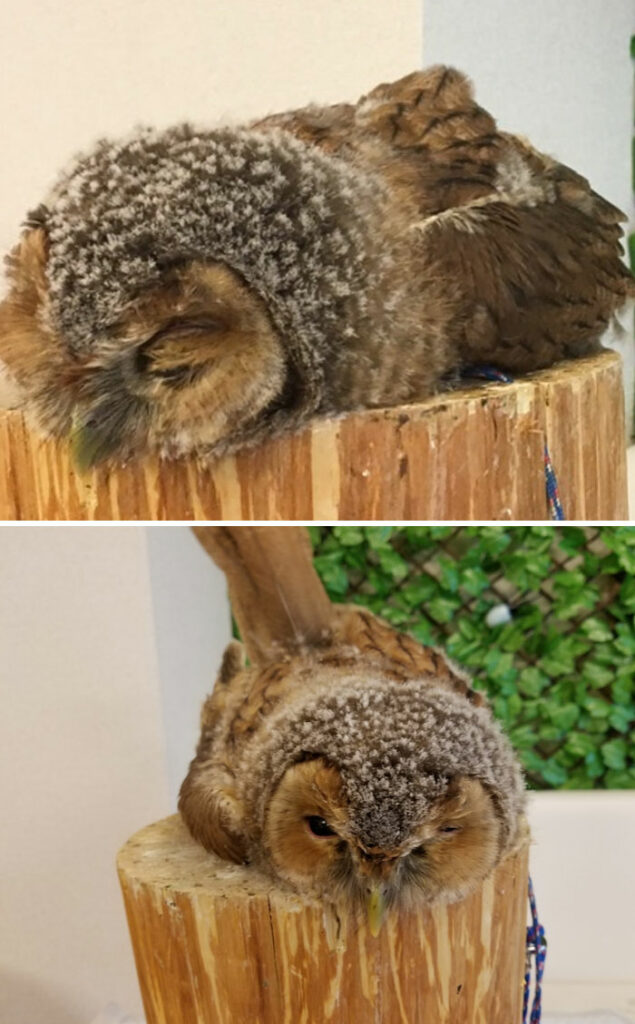
Credit: ameblo
Owls also have unique sleeping habits, and these vary from one species to another. Normally, they require a 12-hour sleep cycle, and they sleep throughout the day, unlike most other birds.
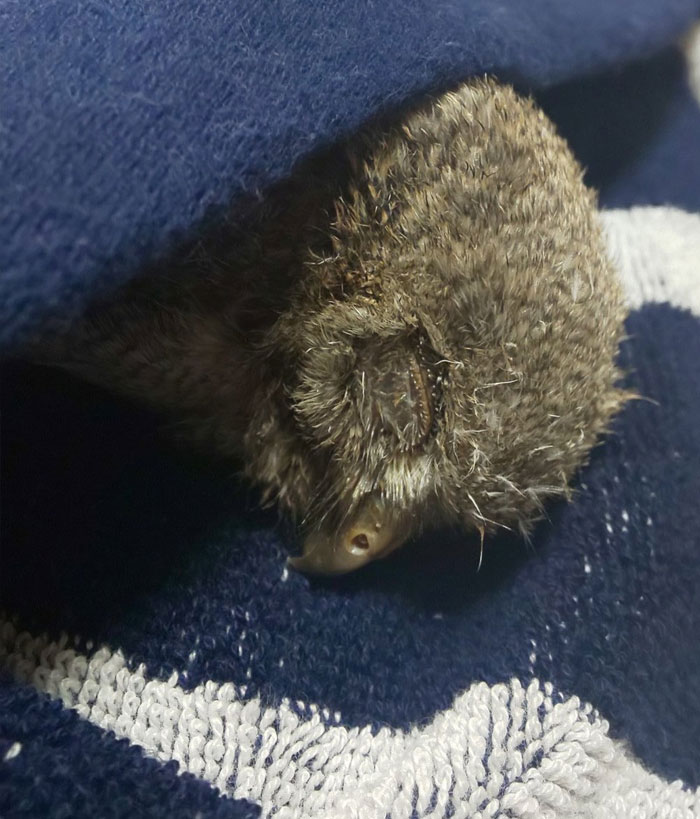
Credit: RukiOwl
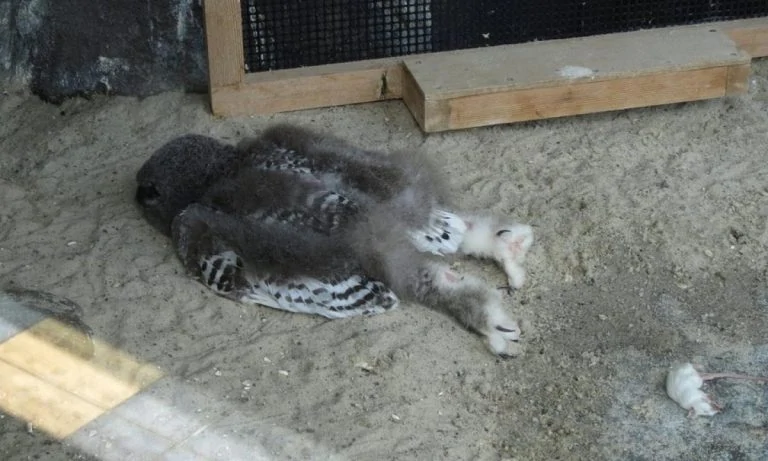
Owls are nocturnal creatures, although not all species sleep throughout the day. Some nocturnal owls even hunt, build their nests and migrate during the day. In the presence of someone nearby or a predator, owls will only take a short nap and may still remain active.
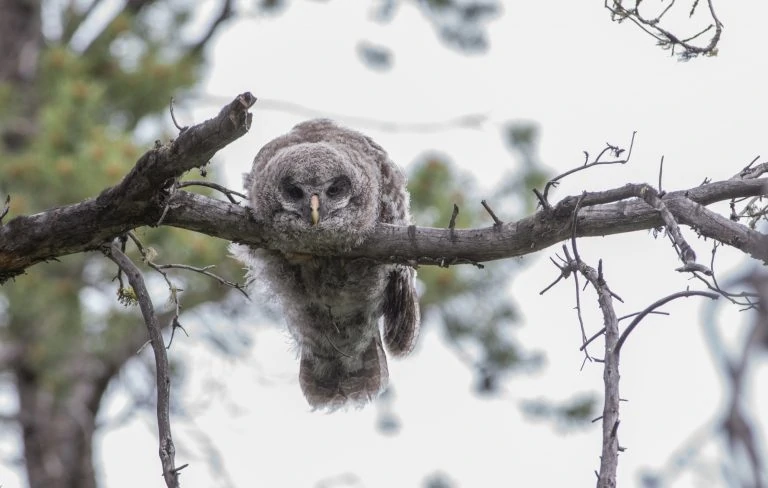
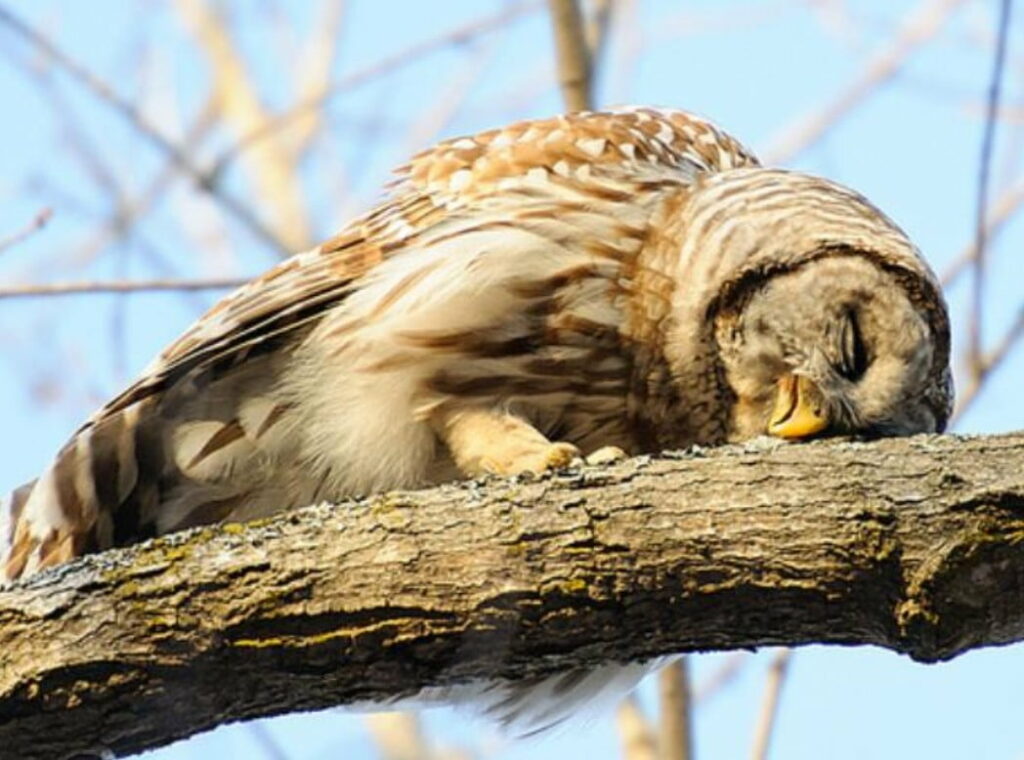
Credit: Daily Dawdle
Similar to dolphins, they are only half asleep, meaning that they sleep with half of their minds awake. Owls have many predators, including other owls, which is why they don’t fall into a deep sleep.
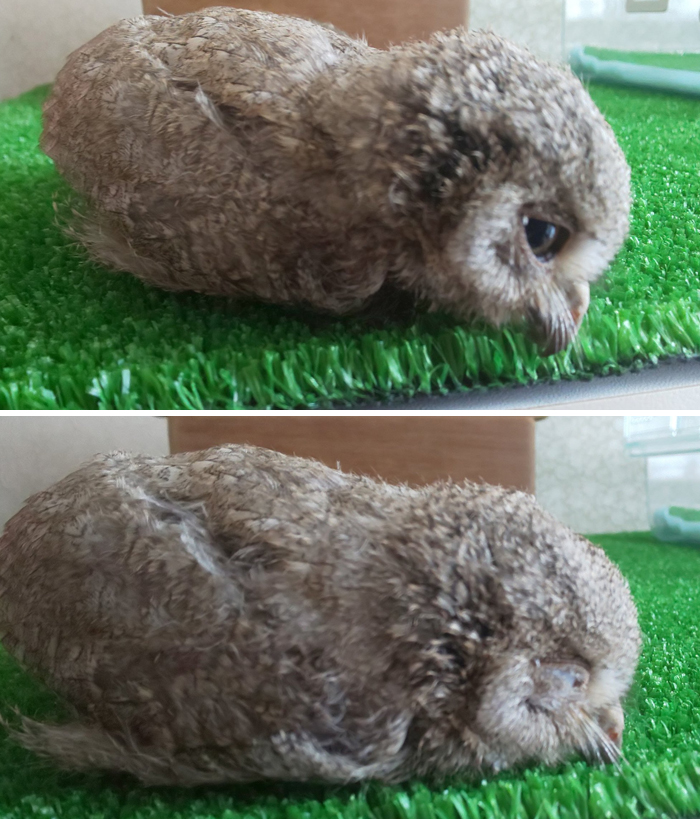
Credit: RukiOwl
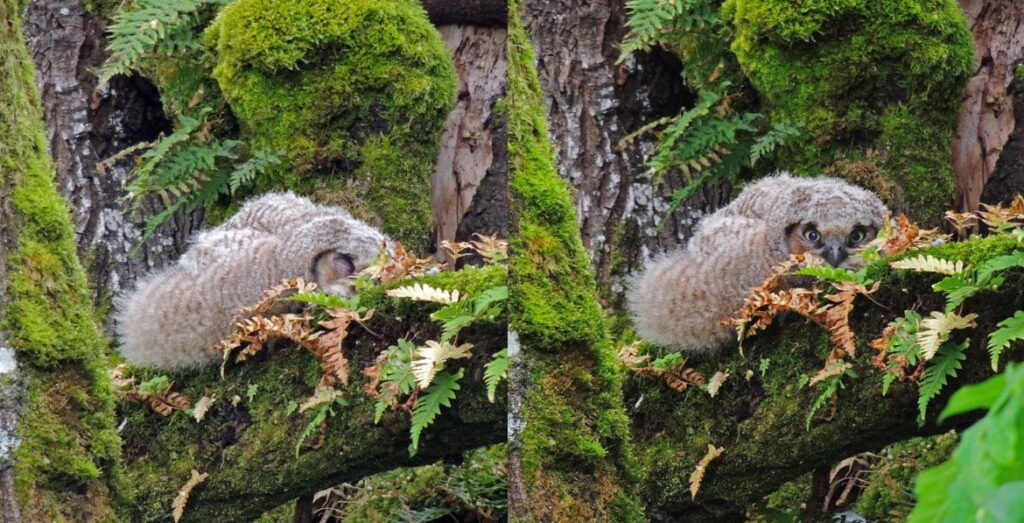
Credit: Kathy C
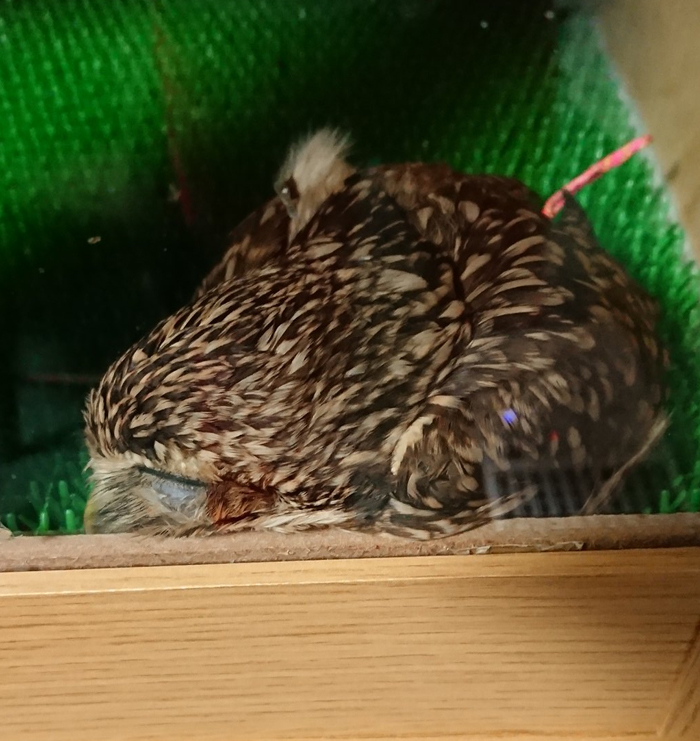

Src: illuzone.net



